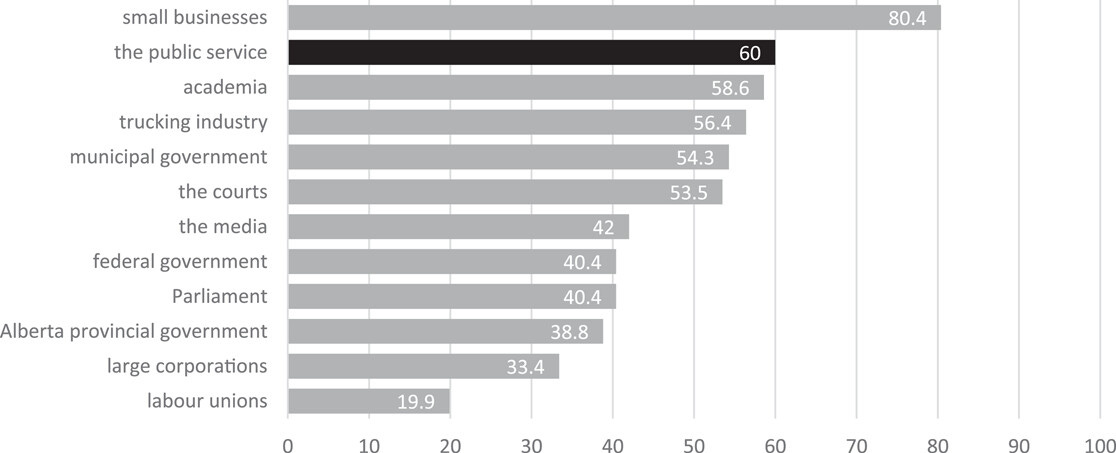A Matter of Trust: The Public, the Pandemic, and the Public Service in Alberta
by Jared Wesley and Savannah Ribeiro
Detailed in our recent article in Canadian Public Administration, we embarked on a study to understand how Albertans' trust in public service evolved during the COVID-19 pandemic. This period significantly altered how public services were delivered and pushed governments more forcefully into Albertans’ lives than at any point in recent memory. Given these changes, we were curious about the public's attitude towards those tasked with providing advice and implementing policy decisions—public servants.
Our investigation drew upon four Viewpoint Alberta surveys conducted in Alberta from August 2020 to April 2022. These surveys provided us with insights into how Albertans felt about their public servants during the pandemic and whether their trust levels changed over time.
We discovered that trust in public servants is strongly linked to how people perceive the government's performance, especially in crisis situations. Key factors influencing this trust included media consumption, political affiliations, and levels of education.
Trust levels indeed fluctuated during the pandemic. For example, trust in Alberta's Chief Medical Officer of Health started high but dipped as the pandemic wore on and as the provincial government faced criticism. This suggested that non-partisan public servants could be affected by the political environment and government performance.
Overall, however, Albertans maintained a relatively high level of confidence in the public service as an institution. A majority or residents had at least “some confidence” in the public service to “do the right thing,” for instance — far more trust than they placed in the media, federal or provinical governments, large corporations, or labour unions.
We also noted that Albertans tended to have more trust in "front-facing" public servants, like nurses and teachers, compared to those working "behind-the-scenes". This distinction highlights the importance of visibility and direct interaction in building trust.
Deeper analysis pointed to the defining role of media consumption in shaping trust. Mainstream news consumers showed more confidence in government institutions and public servants, while those who favored fringe media outlets exhibited lower levels of trust. This finding underscores the significant impact of media on public perception and trust.
Interestingly, we found that rural residents displayed a stronger trust in front-facing public servants than their urban counterparts, challenging some common assumptions about rural skepticism towards the government. This suggests that trust can be more nuanced, influenced by community dynamics and personal interactions.
Education emerged as a positive factor for trust in public institutions, particularly among front-facing public servants. However, our data did not show a significant impact of education on attitudes towards behind-the-scenes civil servants, indicating the need for a nuanced approach when examining trust across different public service sectors.
Contrary to what one might expect, identifying with the governing political party (United Conservative Party in this case) was associated with lower confidence in government institutions and civil servants. This could reflect the party's populist and libertarian leanings, which often emphasize skepticism towards government.
Our study sheds light on the complex relationship Albertans have with their public service, especially highlighted by the pandemic. The findings show a generally positive stance towards public sector workers on the frontlines, despite political and media-driven divisions.
As we move beyond the pandemic, it remains to be seen how these attitudes will evolve. This study provides a foundation for future research to explore trust in public service in other contexts and across different Canadian provinces. Understanding these dynamics is crucial, as trust in public service forms the backbone of effective governance and policy implementation.
For details on the study, including its methodology, see the full article in Canadian Public Administration.





